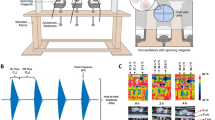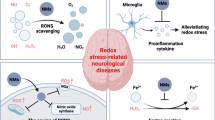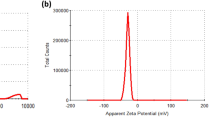Abstract
A feature in neurodegenerative disorders is the loss of neurons, caused by several factors including oxidative stress induced by reactive oxygen species (ROS). In this work, static magnetic field (SMF) was applied in vitro to evaluate its effect on the viability, proliferation, and migration of human neuroblastoma SH-SY5Y cells, and on the toxicity induced by hydrogen peroxide (H2O2), tert-butyl hydroperoxide (tBHP), H2O2/sodium azide (NaN3) and photosensitized oxidations by photodynamic therapy (PDT) photosensitizers. The SMF increased almost twofold the cell expression of the proliferation biomarker Ki-67 compared to control cells after 7 days of exposure. Exposure to SMF accelerated the wound healing of scratched cell monolayers and significantly reduced the H2O2-induced and the tBHP-induced cell deaths. Interestingly, SMF was able to revert the effects of NaN3 (a catalase inhibitor), suggesting an increased activity of catalase under the influence of the magnetic field. In agreement with this hypothesis, SMF significantly reduced the oxidation of DCF-H2, indicating a lower level of intracellular ROS. When the redox imbalance was triggered through photosensitized oxidation, no protection was observed. This observation aligns with the proposed role of catalase in cellular proctetion under SMF. Exposition to SMF should be further validated in vitro and in vivo as a potential therapeutic approach for neurodegenerative disorders.
Graphical Abstract









Similar content being viewed by others
Data Availability
Data and materials are available upon reasonable request.
References
Alía M, Ramos S, Mateos R et al (2005) Response of the antioxidant defense system to tert-butyl hydroperoxide and hydrogen peroxide in a human hepatoma cell line (HepG2). J Biochem Mol Toxicol 19:119–128. https://doi.org/10.1002/jbt.20061
Andra W, Nowak H (2007) Magnetism in medicine: A Handbook, Second Edition. Wiley Online Library
Awe SO, Adeagbo ASO (2002) Analysis of tert-butyl hydroperoxide induced constrictions of perfused vascular beds in vitro. Life Sci 71:1255–1266. https://doi.org/10.1016/s0024-3205(02)01845-3
Bacellar IOL, Tsubone TM, Pavani C, Baptista MS (2015) Photodynamic efficiency: from molecular photochemistry to cell death. Int J Mol Sci 16:20523–20559. https://doi.org/10.3390/ijms160920523
Berlanda J, Kiesslich T, Engelhardt V et al (2010) Comparative in vitro study on the characteristics of different photosensitizers employed in PDT. J Photochem Photobiol B Biol 100:173–180. https://doi.org/10.1016/j.jphotobiol.2010.06.004
Bernabò N, Saponaro I, Tettamanti E et al (2014) Acute exposure to a 2 mT static magnetic field affects ionic homeostasis of in vitro grown porcine granulosa cells. Bioelectromagnetics 35:231–234. https://doi.org/10.1002/bem.21838
Calabrò E, Condello S, Curro M et al (2013) Effects of low intensity static magnetic field on FTIR spectra and ROS production in SH-SY5Y neuronal‐like cells. Bioelectromagnetics 34:618–629. https://doi.org/10.1002/bem.21815
Castano AP, Demidova TN, Hamblin MR (2004) Mechanisms in photodynamic therapy: part one—photosensitizers, photochemistry and cellular localization. Photodiagnosis Photodyn Ther 1:279–293. https://doi.org/10.1016/S1572-1000(05)00007-4
Chandra J, Samali A, Orrenius S (2000) Triggering and modulation of apoptosis by oxidative stress. Free Radic Biol Med 29:323–333. https://doi.org/10.1016/s0891-5849(00)00302-6
Chen J, Shi X, Chen Y et al (2018a) Neuroprotective effects of chloroform and aqueous fractions of noni juice against t-Butyl hydroperoxide-induced oxidative damage in SH-SY5Y cells. Food Nutr Res 62:1–11. https://doi.org/10.29219/fnr.v62.1605
Chen W-T, Lin G-B, Lin S-H et al (2018b) Static magnetic field enhances the anticancer efficacy of capsaicin on HepG2 cells via capsaicin receptor TRPV1. PLoS ONE 13:1–15. https://doi.org/10.1371/journal.pone.0191078
Chi H, Chang H-Y, Sang T-K (2018) Neuronal cell death mechanisms in major neurodegenerative Diseases. Int J Mol Sci 19:1–18. https://doi.org/10.3390/ijms19103082
Chionna A, Tenuzzo B, Panzarini E et al (2005) Time dependent modifications of Hep G2 cells during exposure to static magnetic fields. Bioelectromagnetics 26:275–286. https://doi.org/10.1002/bem.20081
Chiu K-H, Ou K-L, Lee S-Y et al (2007) Static magnetic fields promote osteoblast-like cells differentiation via increasing the membrane rigidity. Ann Biomed Eng 35:1932–1939. https://doi.org/10.1007/s10439-007-9370-2
Davies MJ (1988) Detection of peroxyl and alkoyl radicals produced by reaction of hydroperoxides with heme-proteins by electron spin resonance spectroscopy. Biochim Biophys Acta (BBA)-General Subj 964:28–35. https://doi.org/10.1016/0304-4165(88)90063-3
Dawson VL, Dawson TM (1996) Nitric Oxide Toxicity in Central Nervous System Cultures. In: Perez-Polo JRBT-M in N (ed) Paradigms of Neural Injury. Academic Press, pp 26–43
Di Loreto S, Falone S, Caracciolo V et al (2009) Fifty hertz extremely low-frequency magnetic field exposure elicits redox and trophic response in rat-cortical neurons. J Cell Physiol 219:334–343. https://doi.org/10.1002/jcp.21674
Dini L, Abbro L (2005) Bioeffects of moderate-intensity static magnetic fields on cell cultures. Micron 36:195–217. https://doi.org/10.1016/j.micron.2004.12.009
Dougherty TJ, Gomer CJ, Henderson BW et al (1998) Photodynamic therapy. JNCI J Natl Cancer Inst 90:889–905. https://doi.org/10.1093/jnci/90.12.889
Falone S, Santini S, Cordone V et al (2017) Power frequency magnetic field promotes a more malignant phenotype in neuroblastoma cells via redox-related mechanisms. Sci Rep 7:1–14. https://doi.org/10.1038/s41598-017-11869-8
Fan Y, Ji X, Zhang L, Zhang X (2021) The analgesic effects of static magnetic fields. Bioelectromagnetics 42:115–127. https://doi.org/10.1002/bem.22323
Feng C, Yu B, Song C et al (2022) Static magnetic fields reduce oxidative stress to improve Wound Healing and Alleviate Diabetic Complications. Cells 11:1–17. https://doi.org/10.3390/cells11030443
Funnell JL, Ziemba AM, Nowak JF et al (2021) Assessing the combination of magnetic field stimulation, iron oxide nanoparticles, and aligned electrospun fibers for promoting neurite outgrowth from dorsal root ganglia in vitro. Acta Biomater 131:302–313. https://doi.org/10.1016/j.actbio.2021.06.049
Gao C, Chang P, Yang L et al (2018) Neuroprotective effects of hydrogen sulfide on sodium azide-induced oxidative stress in PC12 cells. Int J Mol Med 41:242–250. https://doi.org/10.3892/ijmm.2017.3227
Ghodbane S, Lahbib A, Sakly M, Abdelmelek H (2013) Bioeffects of static magnetic fields: oxidative stress, Genotoxic effects, and Cancer studies. Biomed Res Int 2013:1–12. https://doi.org/10.1155/2013/602987
Glinka M, Gawron S, Sieroń A et al (2018) Impact of static magnetic field on the antioxidant defence system of mice fibroblasts. Biomed Res Int 2018:1–8. https://doi.org/10.1155/2018/5053608
Gurhan H, Bruzon R, Kandala S et al (2021) Effects induced by a weak static magnetic field of different intensities on HT-1080 fibrosarcoma cells. Bioelectromagnetics 42:212–223. https://doi.org/10.1002/bem.22332
He Z-H (2019) Protective effect of trans-anethole on PC12 cell injury induced by sodium azide. Chin Pharmacol Bull 321–326
Horwitz LD, Leff JA (1995) Catalase and hydrogen peroxide cytotoxicity in cultured cardiac myocytes. J Mol Cell Cardiol 27:909–915. https://doi.org/10.1016/0022-2828(95)90041-1
Ismail N, Ismail M, Fathy SF et al (2012) Neuroprotective effects of germinated brown rice against hydrogen peroxide induced cell death in human SH-SY5Y cells. Int J Mol Sci 13:9692–9708. https://doi.org/10.3390/ijms13089692
Joonwichien S, Yamasue E, Okumura H, Ishihara KN (2011) Magnetic field effects on photodecomposition of methylene blue over ZnO particles. RSC Adv 1:1060–1063. https://doi.org/10.1039/C1RA00051A
Kimsa-Dudek M, Synowiec-Wojtarowicz A, Derewniuk M et al (2019) The effect of simultaneous exposure of human fibroblasts to fluoride and moderate intensity static magnetic fields. Int J Radiat Biol 95:1581–1587. https://doi.org/10.1080/09553002.2019.1642543
Kondaveeti S, Semeano ATS, Cornejo DR et al (2018) Magnetic hydrogels for levodopa release and cell stimulation triggered by external magnetic field. Colloids Surf B Biointerfaces 167:415–424. https://doi.org/10.1016/j.colsurfb.2018.04.040
Lazzé MC, Pizzala R, Savio M et al (2003) Anthocyanins protect against DNA damage induced by tert-butyl-hydroperoxide in rat smooth muscle and hepatoma cells. Mutat Res Toxicol Environ Mutagen 535:103–115. https://doi.org/10.1016/S1383-5718(02)00285-1
Lennicke C, Rahn J, Lichtenfels R et al (2015) Hydrogen peroxide–production, fate and role in redox signaling of Tumor cells. Cell Commun Signal 13:1–19. https://doi.org/10.1186/s12964-015-0118-6
Lew W, Huang Y, Huang K et al (2018) Static magnetic fields enhance dental pulp stem cell proliferation by activating the p38 mitogen-activated protein kinase pathway as its putative mechanism. J Tissue Eng Regen Med 12:19–29. https://doi.org/10.1002/term.2333
Li J, O W, Li W et al (2013) Oxidative stress and neurodegenerative disorders. Int J Mol Sci 14:24438–24475. https://doi.org/10.3390/ijms141224438
Mahaseth T, Kuzminov A (2017) Potentiation of hydrogen peroxide toxicity: from catalase inhibition to stable DNA-iron complexes. Mutat Res Mutat Res 773:274–281. https://doi.org/10.1016/j.mrrev.2016.08.006
Makinistian L, Belyaev I (2018) Magnetic field inhomogeneities due to CO2 incubator shelves: a source of experimental confounding and variability? R Soc Open Sci 5:172095. https://doi.org/10.1098/rsos.172095
Martino CF, Castello PR (2011) Modulation of hydrogen peroxide production in cellular systems by low level magnetic fields. PLoS ONE 6:1–6. https://doi.org/10.1371/journal.pone.0022753
Martins WK, Santos NF, de Rocha C S, et al (2019) Parallel damage in mitochondria and lysosomes is an efficient way to photoinduce cell death. Autophagy 15:259–279. https://doi.org/10.1080/15548627.2018.1515609
Marycz K, Kornicka K, Röcken M (2018) Static magnetic field (SMF) as a regulator of stem cell fate–new perspectives in regenerative medicine arising from an underestimated tool. Stem Cell Rev Reports 14:785–792. https://doi.org/10.1007/s12015-018-9847-4
Medeiros HR, Assumpcao JAF, Medeiros LF et al (2020) Static magnetic stimulation induces cell-type specific alterations in the viability of SH-SY5Y Neuroblastoma Cell line. Anticancer Res 40:5151–5158. https://doi.org/10.21873/anticanres.14518
Merck Enzymatic Assay of Catalase (EC 1.11.1.6). https://www.sigmaaldrich.com/BR/pt/technical-documents/protocol/protein-biology/enzyme-activity-assays/enzymatic-assay-of-catalase
Micheli L, Collodel G, Moretti E et al (2021) Redox imbalance induced by docetaxel in the neuroblastoma SH-SY5Y cells: a study of docetaxel-induced neuronal damage. Redox Rep 26:18–28. https://doi.org/10.1080/13510002.2021.1884802
Mo W, Zhang Z, Liu Y et al (2013) Magnetic shielding accelerates the proliferation of human neuroblastoma cell by promoting G1-phase progression. PLoS ONE 8:1–11. https://doi.org/10.1371/journal.pone.0054775
Morris CE, Skalak TC (2008) Acute exposure to a moderate strength static magnetic field reduces edema formation in rats. Am J Physiol Circ Physiol 294:H50–H57. https://doi.org/10.1152/ajpheart.00529.2007
Nopparat C, Chantadul V, Permpoonputtana K, Govitrapong P (2017) The anti-inflammatory effect of melatonin in SH-SY5Y neuroblastoma cells exposed to sublethal dose of hydrogen peroxide. Mech Ageing Dev 164:49–60. https://doi.org/10.1016/j.mad.2017.04.001
Ogilby PR (2010) Singlet oxygen: there is indeed something new under the sun. Chem Soc Rev 39:3181–3209. https://doi.org/10.1039/B926014P
Oliveira CS, Turchiello R, Kowaltowski AJ et al (2011) Major determinants of photoinduced cell death: subcellular localization versus photosensitization efficiency. Free Radic Biol Med 51:824–833. https://doi.org/10.1016/j.freeradbiomed.2011.05.023
Petcharat K, Singh M, Ingkaninan K et al (2015) Bacopa monnieri protects SH-SY5Y cells against tert-butyl hydroperoxide-induced cell death via the ERK and PI3K pathways. Siriraj Med J 67:20–26
Pichorner H, Jessner G, Ebermann R (1993) tBOOH acts as a Suicide substrate for catalase. Arch Biochem Biophys 300:258–264. https://doi.org/10.1006/abbi.1993.1036
Prina-Mello A, Campbell V, Coey JMD (2005) Static magnetic field effects on cells. A possible road to cell differentiation. In: NSTI Nanotechnology Conference and Trade Show-NSTI Nanotech 2005 Technical Proceedings. pp 96–99
Prina-Mello A, Farrell E, Prendergast PJ et al (2006) Influence of strong static magnetic fields on primary cortical neurons. Bioelectromagnetics 27:35–42. https://doi.org/10.1002/bem.20173
Rakotoarisoa M, Angelov B, Espinoza S et al (2019) Cubic Liquid Crystalline Nanostructures Involving Catalase and Curcumin: BioSAXS Study and Catalase Peroxidatic Function after cubosomal nanoparticle treatment of differentiated SH-SY5Y cells. Molecules 24
Riancho J, de la Sanchez JR, Paz-Fajardo L et al (2021) The role of magnetic fields in neurodegenerative Diseases. Int J Biometeorol 65:107–117. https://doi.org/10.1007/s00484-020-01896-y
Rosen AD (2003) Mechanism of action of moderate-intensity static magnetic fields on biological systems. Cell Biochem Biophys 39:163–173. https://doi.org/10.1385/CBB:39:2:163
Selvatici R, Previati M, Marino S et al (2009) Sodium Azide Induced neuronal damage in Vitro: evidence for non-apoptotic cell death. Neurochem Res 34:909–916. https://doi.org/10.1007/s11064-008-9852-0
Semeano AT, Tofoli FA, Corrêa-Velloso JC et al (2022) Effects of Magnetite nanoparticles and static magnetic field on neural differentiation of pluripotent stem cells. Stem Cell Rev Reports 18:1337–1354. https://doi.org/10.1007/s12015-022-10332-0
Singh A, Kukreti R, Saso L, Kukreti S (2019) Oxidative stress: a key modulator in neurodegenerative Diseases. Molecules 24:1–20. https://doi.org/10.3390/molecules24081583
Sirmatel Ö, Sert C, Sirmatel F et al (2007) Total antioxidant capacity, total oxidant status and oxidative stress index in the men exposed to 1.5 T static magnetic field. Gen Physiol Biophys 26:86–90
Sittipol W, Sronsri C, Kongpop U (2021) Effect of magnetic fields on the efficiency of the photocatalytic degradation of methylene blue in a dynamic fluid system. J Clean Prod 325:1–9. https://doi.org/10.1016/j.jclepro.2021.129284
Slamenova D, Kozics K, Hunakova L et al (2013) Comparison of biological processes induced in HepG2 cells by tert-butyl hydroperoxide (t-BHP) and hydroperoxide (H2O2): the influence of carvacrol. Mutat Res Toxicol Environ Mutagen 757:15–22. https://doi.org/10.1016/j.mrgentox.2013.03.014
Song C, Yu B, Wang J et al (2021) Moderate static Magnet fields suppress Ovarian Cancer Metastasis via ROS-Mediated oxidative stress. Oxid Med Cell Longev 2021:1–18. https://doi.org/10.1155/2021/7103345
Surma SV, Belostotskaya GB, Shchegolev BF, Stefanov VE (2014) Effect of weak static magnetic fields on the development of cultured skeletal muscle cells. Bioelectromagnetics 35:537–546. https://doi.org/10.1002/bem.21876
Tat J, Heskett K, Satomi S et al (2021) Sodium azide Poisoning: a narrative review. Clin Toxicol 59:683–697. https://doi.org/10.1080/15563650.2021.1906888
Teng HC (2005) A Puzzle of the effect of magnetic field on biological cells. Life Sci J 2:16–21. https://doi.org/1097- 8135
Tenuzzo B, Chionna A, Panzarini E et al (2006) Biological effects of 6 mT static magnetic fields: a comparative study in different cell types. Bioelectromagnetics 27:560–577. https://doi.org/10.1002/bem.20252
Thornalley PJ, Trotha RJ, Stern A (1984) FREE RADICAL PRODUCTION FROM THE REACTION OF t-BUTYL HYDROPEROXIDE WITH IRON COMPLEXES. In: Bors W, Saran M, Tait D (eds) Oxygen radicals in Chemistry and Biology. De Gruyter, pp 215–218
Tian X, Wang D, Zha M et al (2018) Magnetic field direction differentially impacts the growth of different cell types. Electromagn Biol Med 37:114–125. https://doi.org/10.1080/15368378.2018.1458627
Tian W, Heo S, Kim D-W et al (2021) Ethanol extract of Maclura tricuspidata fruit protects SH-SY5Y neuroblastoma cells against H2O2-induced oxidative damage via inhibiting MAPK and NF-κB signaling. Int J Mol Sci 22:1–16. https://doi.org/10.3390/ijms22136946
Venter C, Niesler CU (2019) Rapid quantification of cellular proliferation and migration using ImageJ. Biotechniques 66:99–102. https://doi.org/10.2144/btn-2018-0132
Vergallo C, Ahmadi M, Mobasheri H, Dini L (2014) Impact of inhomogeneous static magnetic field (31.7–232.0 mT) exposure on human neuroblastoma SH-SY5Y cells during cisplatin administration. PLoS ONE 9:1–19. https://doi.org/10.1371/journal.pone.0113530
Vilema-Enríquez G, Arroyo A, Grijalva M et al (2016) Molecular and cellular effects of hydrogen peroxide on human Lung cancer cells: potential therapeutic implications. Oxid Med Cell Longev 2016:1–12. https://doi.org/10.1155/2016/1908164
Wang H, Zhang X (2017) Magnetic fields and reactive oxygen species. Int J Mol Sci 18:1–20. https://doi.org/10.3390/ijms18102175
Wang R, Li X, Yoon J (2021) Organelle-targeted photosensitizers for precision photodynamic therapy. ACS Appl Mater Interfaces 13:19543–19571. https://doi.org/10.1021/acsami.1c02019
Xie H, Hu L, Li G (2010) SH-SY5Y human neuroblastoma cell line: in vitro cell model of dopaminergic neurons in Parkinson’s Disease. Chin Med J (Engl) 123:1086–1092. https://doi.org/10.3760/cma.j.issn.0366-6999.2010.08.021
Yakir-Blumkin M, Ben, Loboda Y, Schächter L, Finberg JPM (2014) Neuroprotective effect of weak static magnetic fields in primary neuronal cultures. Neuroscience 278:313–326. https://doi.org/10.1016/j.neuroscience.2014.08.029
Yan QC, Tomita N, Ikada Y (1998) Effects of static magnetic field on bone formation of rat femurs. Med Eng Phys 20:397–402. https://doi.org/10.1016/s1350-4533(98)00051-4
Yu B, Liu J, Cheng J et al (2021) A static magnetic field improves iron metabolism and prevents high-fat-diet/streptozocin-induced Diabetes. Innov 2:1–11. https://doi.org/10.1016/j.xinn.2021.100077
Zadeh-Haghighi H, Simon C (2022) Magnetic field effects in biology from the perspective of the radical pair mechanism. J R Soc Interface 19:1–39. https://doi.org/10.1098/rsif.2022.0325
Zhang L, Li L, Ban L et al (2000) Effect of sodium azide on mitochondrial membrane potential in SH-SY5Y human neuroblastoma cells. Acta Acad Med Sin 22:436–439
Zhang J, Ding C, Ren L et al (2014) The effects of static magnetic fields on bone. Prog Biophys Mol Biol 114:146–152. https://doi.org/10.1016/j.pbiomolbio.2014.02.001
Zhang X, Yarema K, Xu A (2017) Biological effects of Static magnetic fields. Springer Singapore
Zhao C (2023) Cell culture: in vitro model system and a promising path to in vivo applications. J Histotechnol 46:1–4. https://doi.org/10.1080/01478885.2023.2170772
Zhao J, Li Y, Deng K et al (2017) Therapeutic effects of static magnetic field on wound healing in diabetic rats. J Diabetes Res 1–5. https://doi.org/10.1155/2017/6305370
Zuo Y, Hu J, Xu X et al (2019) Sodium azide induces mitochondria–mediated apoptosis in PC12 cells through Pgc–1α–associated signaling pathway. Mol Med Rep 19:2211–2219. https://doi.org/10.3892/mmr.2019.9853
Funding
E.C.G.F. is grateful for a CAPES fellowship: 88882.328247/2019-0. Finance Code 001. J.B.S. is grateful for a CAPES fellowship: 88887.517645/2020-00. Finance Code 001. H.U. is grateful for grant support from FAPESP (grant 2018/07366-4) and Conselho Nacional de Desenvolvimento Científico e Tecnológico (CNPq Project No. 406396/2021 and 308012/2021-6). D.F.S.P. is grateful for grant support from FAPESP (grant 2018/13492-2) and Conselho Nacional de Desenvolvimento Científico e Tecnológico (CNPq Project No. 304017/2021).
Author information
Authors and Affiliations
Contributions
ECGF, JBS and BF: study design, experiment performance, and analysis and drafting of the manuscript. DFSP, MSB, and HU: conception, design, revision, and approval of the manuscript. All authors gave final approval of the version to be published.
Corresponding authors
Ethics declarations
Ethical approval
Not applicable.
Competing interests
The authors declare no competing interests.
Additional information
Publisher’s Note
Springer Nature remains neutral with regard to jurisdictional claims in published maps and institutional affiliations.
Electronic Supplementary Material
Below is the link to the electronic supplementary material.
Rights and permissions
Springer Nature or its licensor (e.g. a society or other partner) holds exclusive rights to this article under a publishing agreement with the author(s) or other rightsholder(s); author self-archiving of the accepted manuscript version of this article is solely governed by the terms of such publishing agreement and applicable law.
About this article
Cite this article
Frachini, E.C.G., Silva, J.B., Fornaciari, B. et al. Static Magnetic Field Reduces Intracellular ROS Levels and Protects Cells Against Peroxide-Induced Damage: Suggested Roles for Catalase. Neurotox Res 42, 2 (2024). https://doi.org/10.1007/s12640-023-00679-8
Received:
Revised:
Accepted:
Published:
DOI: https://doi.org/10.1007/s12640-023-00679-8




